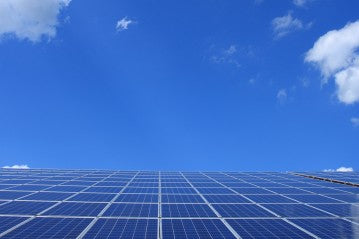
As the world moves towards cleaner and more sustainable energy sources, solar power has gained tremendous popularity. Solar panels are a key component of a solar energy system, and they play a crucial role in harnessing the sun's energy to power our homes, businesses, and even inverter chargers. In this blog post, we will explore the factors that determine the number of solar panels needed for a 3000 watt inverter charger, helping you make an informed decision when considering solar energy options.
Understanding Inverter Chargers
Before delving into the specifics of solar panels, let's take a moment to understand what an inverter charger is. An inverter charger is a device that combines the functionalities of an inverter and a battery charger. It converts direct current (DC) power from a battery into alternating current (AC) power that can be used to run various household appliances and devices. Inverter chargers are commonly used in off-grid and backup power systems.
Factors Affecting Solar Panel Requirements
Several factors come into play when determining the number of solar panels needed for a 3000 watt inverter charger. Let's explore these factors in more detail:
1. Average Daily Sunlight Hours
The amount of sunlight your location receives is a critical factor in calculating the number of solar panels required. Areas with longer and sunnier days will generate more solar energy, requiring fewer panels to meet the power demand of a 3000 watt inverter charger. On the other hand, regions with shorter or cloudier days may necessitate a larger number of panels.
2. Solar Panel Efficiency
Solar panel efficiency refers to the ability of a panel to convert sunlight into electricity. Higher efficiency panels can generate more power with a smaller surface area. When considering solar panels for your inverter charger, look for models with high efficiency ratings to maximize power output.
3. Inverter Charger Efficiency
Inverter chargers also have their own efficiency rating, which determines how much of the energy from the solar panels will be converted and utilized. Higher efficiency inverter chargers ensure minimal energy loss during the conversion process. When selecting an inverter charger, opt for models with high efficiency to make the most of your solar panel investment.
Calculating Solar Panel Requirements
To estimate the number of solar panels needed for a 3000 watt inverter charger, we can use the following steps:
Step 1: Determine Daily Energy Consumption
Start by assessing your daily energy consumption. Consider the appliances and devices that will be powered by the inverter charger and their respective power ratings. Add up the wattage of all these devices to get an estimate of your daily energy consumption.
Step 2: Account for Inefficiencies
To account for inefficiencies in the system, it is recommended to multiply your daily energy consumption by a factor of 1.2. This factor considers losses due to wiring, inverter inefficiencies, and other variables.
Step 3: Calculate Solar Panel Capacity
Divide the estimated daily energy consumption by the average daily sunlight hours in your area. This will give you the required solar panel capacity in watts. In this case, for a 3000 watt inverter charger, you would need a solar panel capacity of 3000 watts.
Step 4: Consider Solar Panel Specifications
Now, take into account the specifications of the solar panels you plan to use. Consider their wattage, efficiency, and other factors. Divide the required solar panel capacity by the wattage of a single panel to determine the number of panels needed.
Conclusion
Determining the number of solar panels needed for a 3000 watt inverter charger requires careful consideration of various factors such as average daily sunlight hours, solar panel efficiency, and inverter charger efficiency. By estimating your daily energy consumption, accounting for inefficiencies, and considering the specifications of the solar panels, you can make an informed decision about the number of panels required.
Investing in solar energy and an inverter charger not only reduces your carbon footprint but also provides you with a reliable and sustainable source of power. By understanding your energy needs and the factors influencing solar panel requirements, you can confidently embrace solar energy and enjoy the benefits it brings.
Remember, when purchasing solar energy-related products, always consult with reputable suppliers and professionals who can guide you in selecting the most suitable components for your specific requirements.

0 Kommentare